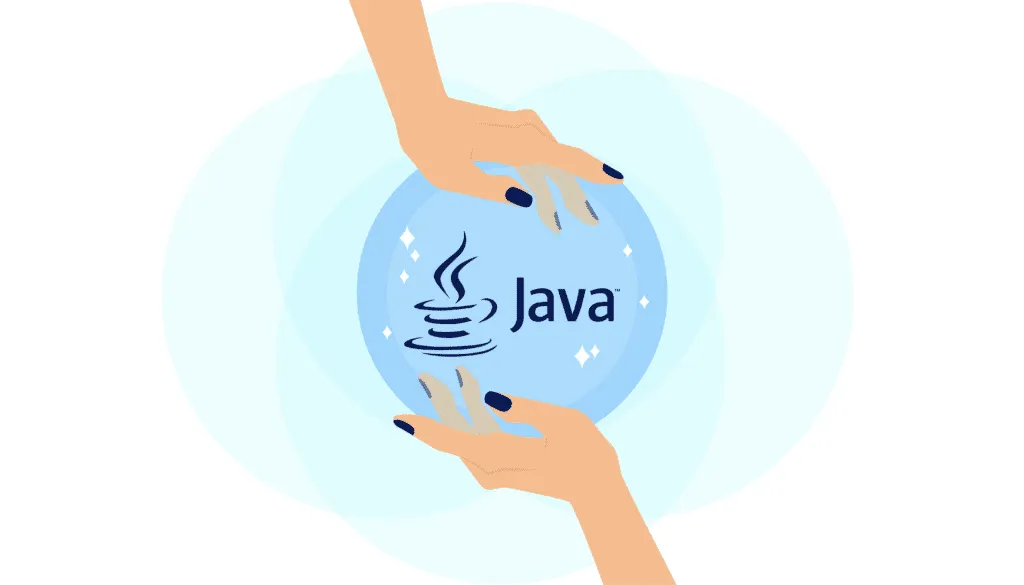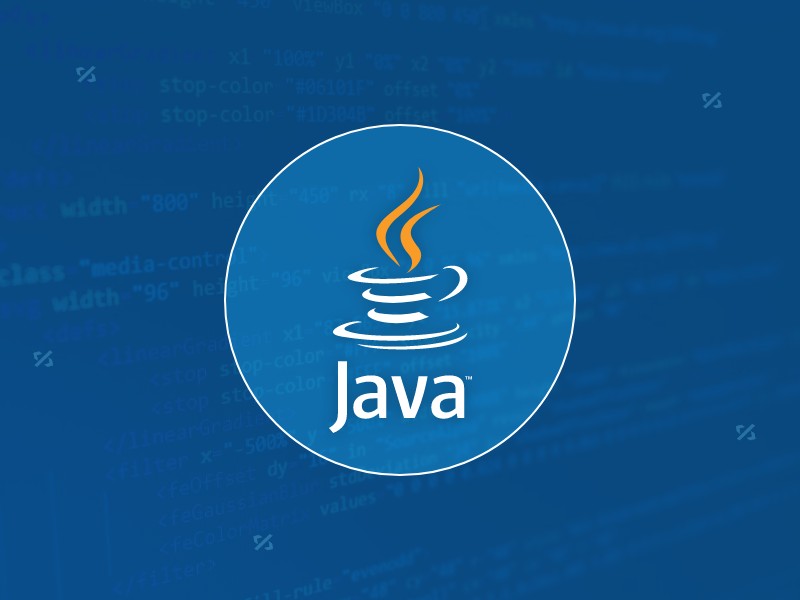Implementing Dependency Injection in Java Applications
Jul 04, 2025 am 01:14 AMDependency injection (DI) achieves decoupling through the dependencies of external control objects, improving code testability, maintainability and flexibility. 1. DI is a design pattern, and the core is to create it by external incoming dependencies rather than objects themselves; 2. Common injection methods include constructor injection (most commonly used), Setter injection (applicable to optional dependencies), and field injection (not recommended); 3. DI can be implemented manually, such as passing dependencies through constructors; 4. Use the Spring framework to simplify dependency management, and automatically handle dependencies through @Component and @Autowired annotations; 5. Pay attention to avoiding complex constructors and bean conflicts, not all classes require framework management. Mastering these key points can help you apply DI in Java more efficiently.

Implementing dependency injection (DI) in Java applications is the core of decoupling the dependencies between components and separating the creation and use of objects. The benefit of doing this is to improve the testability, maintainability and flexibility of the code. If you are just starting to get involved in DI, you may find it a bit abstract, but in fact, you can easily get started by just mastering a few key points.

What is dependency injection? Why do you need it?
Dependency injection is a design pattern. Its core idea is to control the dependencies of the object from the outside, rather than to create or find dependencies by the object itself . This may sound a bit confusing, for a simple example:

For example, you have an EmailService class that is used by UserService . If you do not use DI, UserService may directly new an EmailService instance. The problem with this is that if you want to change the service sent by SMS in the future, you have to modify UserService code.
Through dependency injection, you can pass EmailService as a parameter to UserService , or the framework will automatically inject it for you, thus achieving loose coupling.

There are three common dependency injection methods:
- Constructor injection
- Setter Injection
- Field injection (not recommended)
Constructor injection is most commonly used and is easiest to test; Setter injection is suitable for optional dependencies; field injection is simple to write, but it is not conducive to testing and maintenance, so it is recommended to use it less.
How to implement a simple DI manually?
If you don't want to introduce frameworks like Spring or Dagger from the beginning, you can also manually implement a simple dependency injection logic. Take constructor injection as an example:
class EmailService {
public void sendEmail(String to, String message) {
System.out.println("Sending email to " to ": " message);
}
}
class UserService {
private EmailService emailService;
public UserService(EmailService emailService) {
this.emailService = emailService;
}
public void registerUser(String email) {
// do something
emailService.sendEmail(email, "Welcome!");
}
}Then in the main program:
EmailService emailService = new EmailService();
UserService userService = new UserService(emailService);
userService.registerUser("user@example.com");Although "manual", this approach clearly demonstrates the nature of DI: dependencies are not created internally, but are passed from outside . This is helpful for understanding the principles of DI.
Dependency injection using Spring framework
Once the project becomes larger, manual management of dependencies will become cumbersome, and this is the time to simplify this process with the help of the Spring framework. Spring is one of the most mainstream DI containers in the Java ecosystem.
To implement DI using Spring, there are two main steps:
- Add annotations on the class to indicate which classes need to be managed by Spring
- Automatically inject dependencies using @Autowired annotation
Continue with the above example:
@Component
class EmailService {
public void sendEmail(String to, String message) {
System.out.println("Sending email to " to ": " message);
}
}
@Component
class UserService {
@Autowired
private EmailService emailService;
public void registerUser(String email) {
emailService.sendEmail(email, "Welcome!");
}
}After Spring starts, these classes will be automatically scanned and the dependencies between them will be handled. You just need to focus on business logic.
A few points to note:
- Don't do too many complicated operations in the constructor, as it can easily lead to initialization failure.
- Try to avoid multiple bean conflicts, which can be specified explicitly through @Primary or @Qualifier
- If you try to inject it in a non-Spring-managed class, it will not take effect
Tips: Don't over-reliance on frameworks
Although frameworks like Spring are very useful, DI frameworks are not necessarily required in some small projects or tool classes. Manually implementing dependency injection is sometimes more intuitive and easier to debug.
In addition, some developers are accustomed to adding @Component or @Service to each class, but in fact, not all classes need to be managed by containers. Only classes that do need to be used by other components should be handed over to Spring.
To summarize:
- Identify which classes need to be injected and which are just ordinary auxiliary classes
- Constructor injection is the clearest way
- Framework is a tool, don't use it for the sake of use
Basically that's it. If you master these points well, it will not be too difficult to apply DI in Java.
The above is the detailed content of Implementing Dependency Injection in Java Applications. For more information, please follow other related articles on the PHP Chinese website!

Hot AI Tools

Undress AI Tool
Undress images for free

Undresser.AI Undress
AI-powered app for creating realistic nude photos

AI Clothes Remover
Online AI tool for removing clothes from photos.

Clothoff.io
AI clothes remover

Video Face Swap
Swap faces in any video effortlessly with our completely free AI face swap tool!

Hot Article

Hot Tools

Notepad++7.3.1
Easy-to-use and free code editor

SublimeText3 Chinese version
Chinese version, very easy to use

Zend Studio 13.0.1
Powerful PHP integrated development environment

Dreamweaver CS6
Visual web development tools

SublimeText3 Mac version
God-level code editing software (SublimeText3)
 How to handle transactions in Java with JDBC?
Aug 02, 2025 pm 12:29 PM
How to handle transactions in Java with JDBC?
Aug 02, 2025 pm 12:29 PM
To correctly handle JDBC transactions, you must first turn off the automatic commit mode, then perform multiple operations, and finally commit or rollback according to the results; 1. Call conn.setAutoCommit(false) to start the transaction; 2. Execute multiple SQL operations, such as INSERT and UPDATE; 3. Call conn.commit() if all operations are successful, and call conn.rollback() if an exception occurs to ensure data consistency; at the same time, try-with-resources should be used to manage resources, properly handle exceptions and close connections to avoid connection leakage; in addition, it is recommended to use connection pools and set save points to achieve partial rollback, and keep transactions as short as possible to improve performance.
 How to work with Calendar in Java?
Aug 02, 2025 am 02:38 AM
How to work with Calendar in Java?
Aug 02, 2025 am 02:38 AM
Use classes in the java.time package to replace the old Date and Calendar classes; 2. Get the current date and time through LocalDate, LocalDateTime and LocalTime; 3. Create a specific date and time using the of() method; 4. Use the plus/minus method to immutably increase and decrease the time; 5. Use ZonedDateTime and ZoneId to process the time zone; 6. Format and parse date strings through DateTimeFormatter; 7. Use Instant to be compatible with the old date types when necessary; date processing in modern Java should give priority to using java.timeAPI, which provides clear, immutable and linear
 Comparing Java Frameworks: Spring Boot vs Quarkus vs Micronaut
Aug 04, 2025 pm 12:48 PM
Comparing Java Frameworks: Spring Boot vs Quarkus vs Micronaut
Aug 04, 2025 pm 12:48 PM
Pre-formanceTartuptimeMoryusage, Quarkusandmicronautleadduetocompile-Timeprocessingandgraalvsupport, Withquarkusoftenperforminglightbetterine ServerLess scenarios.2.Thyvelopecosyste,
 How does garbage collection work in Java?
Aug 02, 2025 pm 01:55 PM
How does garbage collection work in Java?
Aug 02, 2025 pm 01:55 PM
Java's garbage collection (GC) is a mechanism that automatically manages memory, which reduces the risk of memory leakage by reclaiming unreachable objects. 1.GC judges the accessibility of the object from the root object (such as stack variables, active threads, static fields, etc.), and unreachable objects are marked as garbage. 2. Based on the mark-clearing algorithm, mark all reachable objects and clear unmarked objects. 3. Adopt a generational collection strategy: the new generation (Eden, S0, S1) frequently executes MinorGC; the elderly performs less but takes longer to perform MajorGC; Metaspace stores class metadata. 4. JVM provides a variety of GC devices: SerialGC is suitable for small applications; ParallelGC improves throughput; CMS reduces
 Understanding Network Ports and Firewalls
Aug 01, 2025 am 06:40 AM
Understanding Network Ports and Firewalls
Aug 01, 2025 am 06:40 AM
Networkportsandfirewallsworktogethertoenablecommunicationwhileensuringsecurity.1.Networkportsarevirtualendpointsnumbered0–65535,withwell-knownportslike80(HTTP),443(HTTPS),22(SSH),and25(SMTP)identifyingspecificservices.2.PortsoperateoverTCP(reliable,c
 go by example defer statement explained
Aug 02, 2025 am 06:26 AM
go by example defer statement explained
Aug 02, 2025 am 06:26 AM
defer is used to perform specified operations before the function returns, such as cleaning resources; parameters are evaluated immediately when defer, and the functions are executed in the order of last-in-first-out (LIFO); 1. Multiple defers are executed in reverse order of declarations; 2. Commonly used for secure cleaning such as file closing; 3. The named return value can be modified; 4. It will be executed even if panic occurs, suitable for recovery; 5. Avoid abuse of defer in loops to prevent resource leakage; correct use can improve code security and readability.
 Comparing Java Build Tools: Maven vs. Gradle
Aug 03, 2025 pm 01:36 PM
Comparing Java Build Tools: Maven vs. Gradle
Aug 03, 2025 pm 01:36 PM
Gradleisthebetterchoiceformostnewprojectsduetoitssuperiorflexibility,performance,andmoderntoolingsupport.1.Gradle’sGroovy/KotlinDSLismoreconciseandexpressivethanMaven’sverboseXML.2.GradleoutperformsMaveninbuildspeedwithincrementalcompilation,buildcac
 How to use the observer pattern in Java?
Aug 02, 2025 am 11:52 AM
How to use the observer pattern in Java?
Aug 02, 2025 am 11:52 AM
The clear answer to this question is the recommendation to implement the observer pattern using a custom observer interface. 1. Although Java provides Observable and Observer, the former is a class and has been deprecated and lacks flexibility; 2. The modern recommended practice is to define a functional Observer interface, and the Subject maintains the Observer list and notify all observers when the state changes; 3. It can be used in combination with Lambda expressions to improve the simplicity and maintainability of the code; 4. For GUI or JavaBean scenarios, PropertyChangeListener can be used. Therefore, new projects should adopt a custom observer interface scheme, which is type-safe, easy to test and specializes in modern Java






